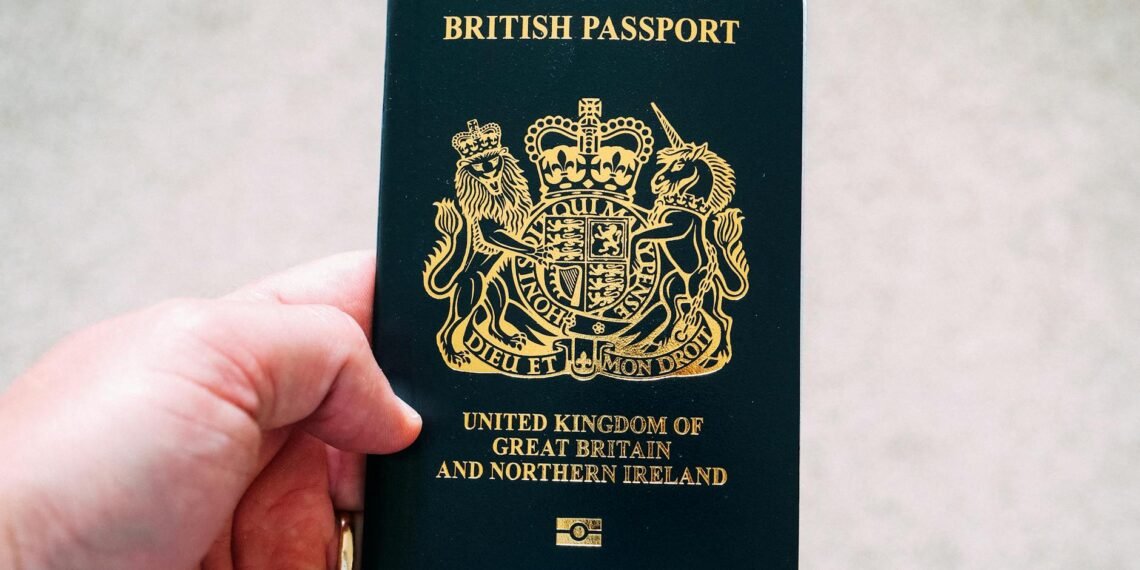Understanding International Driving Licenses
When it comes to driving abroad, having the necessary documentation is essential. One such document that can come in handy is an International Driving License.
What is an International Driving License?
An International Driving License (IDL), also known as an International Driving Permit (IDP), is an official translation of your native driver’s license into multiple languages. It serves as a globally recognized document that allows you to legally drive in foreign countries where your regular driver’s license may not be accepted.
An International Driving License is not a standalone document and should always be used in conjunction with your valid home country driver’s license. It provides crucial information about your driving privileges and helps authorities in foreign countries understand the specifics of your license.
Purpose and Benefits of an International Driving License
The primary purpose of an International Driving License is to facilitate international travel and ensure that language barriers do not hinder your ability to drive legally in a foreign country. It acts as a translation of your native driver’s license and provides essential information in multiple languages, making it easier for local authorities to understand your driving qualifications.
Here are some key benefits of obtaining an International Driving License:
-
Global Recognition: An International Driving License is widely recognized in many countries around the world. It can serve as proof of your driving skills and legal driving status in various foreign jurisdictions.
-
Multilingual Documentation: The IDL includes translations of your driver’s license information in different languages. This can be particularly helpful when dealing with authorities who may not be fluent in your native language.
-
Ease of Communication: In the event of an accident or traffic stop, having an International Driving License can help facilitate effective communication between you and local law enforcement or insurance agencies.
-
International Travel Flexibility: With an International Driving License, you have the flexibility to rent and drive vehicles in different countries without the need to obtain a local driver’s license. This can save you time and effort, especially for short-term visits.
It’s important to note that an International Driving License does not replace your native driver’s license. It is a supplementary document that should always be used in conjunction with your valid home country license. Additionally, the acceptance and requirements for an International Driving License may vary from country to country, so it’s crucial to research and understand the specific regulations of your destination.
In the next sections, we will explore the eligibility requirements and application process for obtaining an International Driving License. We will also discuss the countries that recognize this license and any limitations or restrictions that may apply. Stay tuned for more information on how to navigate the world of international driving.
Obtaining an International Driving License
If you’re planning to drive in another country, obtaining an international driving license is an essential step. This document allows you to legally drive in many foreign countries, provided you have a valid domestic driving license. Let’s explore the eligibility requirements, application process, and documentation needed to obtain an international driving license.
Eligibility Requirements
To be eligible for an international driving license, you must meet the following criteria:
-
Age Requirement: You must be at least 18 years old to apply for an international driving license.
-
Valid Domestic Driving License: You must possess a valid domestic driving license issued by your country of residence. The international driving license acts as a translation of your domestic license, so it’s important to ensure that your domestic license remains valid throughout the duration of your international driving license.
Application Process and Documentation
The application process for an international driving license typically involves the following steps:
-
Application Form: Obtain the international driving license application form from your local driving license authority. This can usually be done online or in person.
-
Completed Application: Fill out the application form accurately and completely. Provide the necessary personal information, such as your full name, address, date of birth, and contact details.
-
Proof of Identity: Submit a copy of your valid domestic driving license as proof of identity. This is necessary to verify your driving eligibility.
-
Passport-Sized Photos: Attach two recent passport-sized photos to your application form. These photos should meet the specific requirements set by your local driving license authority.
-
Payment of Fees: Pay the required fees for the international driving license. The fee amount may vary depending on your country of residence and local driving license authority.
Once you have completed the application form and assembled the necessary documentation, submit them to your local driving license authority for processing. The processing time may vary, so it’s advisable to apply well in advance of your planned travel dates.
It’s important to note that an international driving license is not a standalone document. It must be carried alongside your valid domestic driving license whenever you are driving abroad. This combination ensures that you are legally authorized to drive in foreign countries.
For more information about driving licenses, including tips for passing the driving license test and dealing with situations such as lost or suspended licenses, check out our related articles on driving license test, lost driving license, and driving license suspension. Additionally, it’s crucial to familiarize yourself with any driving license restrictions that may apply to your international driving license.
By understanding the eligibility requirements, application process, and necessary documentation, you can obtain an international driving license and confidently navigate the roads of foreign countries during your travels.
Using an International Driving License
Once you have obtained an international driving license, you can use it to legally drive in various countries around the world. However, it’s important to understand which countries recognize and accept international driving licenses, as well as any limitations and restrictions that may apply.
Countries Recognizing International Driving Licenses
An international driving license is widely recognized and accepted in numerous countries as a valid form of identification for driving. The exact list of countries recognizing international driving licenses may vary, so it’s essential to check the specific requirements of your destination before you travel. However, here are some common countries that generally recognize international driving licenses:
| Country | Recognizes International Driving License? |
|---|---|
| United States | Yes |
| United Kingdom | Yes |
| Canada | Yes |
| Australia | Yes |
| Germany | Yes |
| France | Yes |
| Italy | Yes |
| Spain | Yes |
| Japan | Yes |
It’s important to note that while these countries generally recognize international driving licenses, local traffic laws and regulations still apply. It’s crucial to familiarize yourself with the specific driving rules and requirements of the country you plan to visit. For more information on driving license tests, visit our article on driving license tests.
Limitations and Restrictions
While an international driving license allows you to legally drive in many countries, it’s essential to be aware of its limitations and restrictions. Here are a few key points to keep in mind:
- An international driving license is not a standalone document. It must be used in conjunction with your valid domestic driving license. The international driving license serves as a translation of your domestic license and should be presented alongside it when driving abroad.
- The validity period of an international driving license varies depending on your country of residence. In most cases, it is valid for one year from the date of issue. After this period, you would need to renew it if you plan to continue driving internationally.
- An international driving license does not grant you permission to drive in countries where you are not eligible to drive with your domestic license. For example, if your domestic license has been suspended or revoked, you will still be subject to the same restrictions when using an international driving license.
- Certain countries may have additional requirements or restrictions for drivers, even with an international driving license. It’s crucial to research and comply with any specific regulations imposed by the country you plan to visit. For more information on driving license restrictions, refer to our article on driving license restrictions.
Using an international driving license can provide you with the freedom and convenience to explore different countries by car. However, it’s crucial to stay informed about the recognition, limitations, and restrictions associated with international driving licenses to ensure a smooth and legal driving experience abroad.
Tips for International Driving
When driving in a foreign country with an international driving license, it’s important to be aware of the local traffic laws, insurance considerations, and safety precautions. By understanding and adhering to these tips, you can have a smoother and safer driving experience abroad.
Understanding Local Traffic Laws
Each country has its own set of traffic laws and regulations that may differ from what you are accustomed to. Before driving in a foreign country, take the time to familiarize yourself with the local traffic laws. This includes understanding speed limits, traffic signs and signals, right of way rules, and any specific road regulations.
To ensure your safety and compliance, research and review the traffic laws of the country you will be visiting. You can find valuable information from official government websites or international driving resources. Understanding the local traffic laws will help you navigate the roads confidently and avoid any legal complications. For more information on obtaining a driving license, refer to our article on driving license test.
Insurance Considerations
Before driving internationally, it is crucial to review your insurance coverage. Contact your insurance provider to determine if your existing policy covers international driving or if you need to purchase additional coverage. Some insurance policies may provide limited or no coverage in foreign countries, so it’s important to clarify this beforehand.
Consider obtaining an international auto insurance policy that provides coverage specifically for driving abroad. This can help protect you financially in case of accidents, damages, or theft. Additionally, familiarize yourself with the process of filing an insurance claim while abroad, as it may differ from your home country. Understanding your insurance coverage and having the necessary documentation readily available will provide peace of mind during your international driving experience. For information on lost or stolen driving licenses, refer to our article on lost driving license.
Safety Precautions for Driving Abroad
When driving in a foreign country, it’s essential to prioritize your safety and the safety of others on the road. Here are some important safety precautions to keep in mind:
-
Research and plan your route: Familiarize yourself with the driving routes, road conditions, and potential traffic congestion in the areas you will be visiting. Plan your route in advance to minimize the chances of getting lost or encountering unexpected difficulties.
-
Observe local driving habits: Observe how local drivers behave on the roads and follow their lead. Pay attention to common practices such as lane discipline, signaling, and merging. Adapting to the local driving style can help you navigate the roads more smoothly and reduce the risk of accidents.
-
Be cautious with unfamiliar road signs: Road signs may vary from country to country. Study and understand the meaning of the local road signs before your trip. This will help you interpret and respond to the signs correctly while driving.
-
Avoid distractions: Just like driving at home, distractions can be dangerous. Avoid using your mobile phone or engaging in any other activities that may divert your attention from the road. Stay focused and alert at all times.
-
Follow safety guidelines: Always wear your seatbelt, ensure all passengers are properly restrained, and adhere to speed limits and traffic regulations. Be mindful of pedestrians and other road users, and exercise caution in unfamiliar driving conditions.
By following these safety precautions and keeping yourself informed, you can make the most of your international driving experience while prioritizing safety. For information on driving license restrictions, refer to our article on driving license restrictions. Drive responsibly and enjoy the journey!










